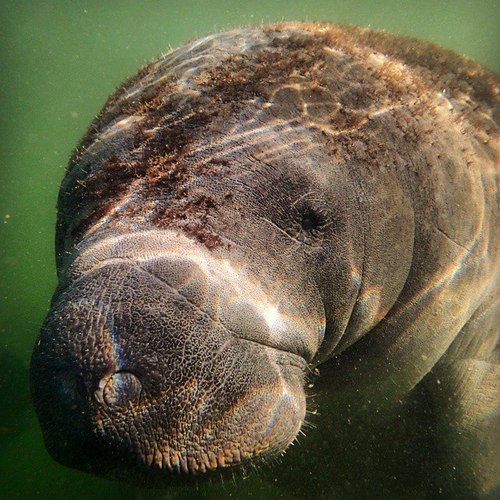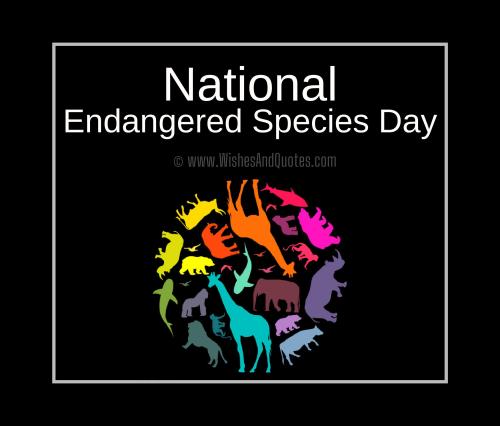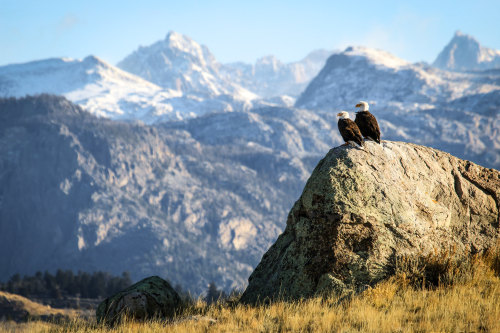#endangered species act
Friday, May 20, is Endangered Species Day. Take a look at the poster above promoting the special day. Notice which species is missing? Humans.
If I had in front of me, right now, a consequential US politician, I would propose that the U. S. Fish and Wildlife Service propose that humans be listed as an endangered species. If that fails, then promoter organize a petition drive, and then that petition be presented to the U.S. Fish and Wildlife Service, after signatures by millions of Americans, to list humans as endangered species. To support the assertion, I’d point to the climate crisis and the biodiversity crisis. Humans cannot survive as a species if the climate cooks or drowns us or deprives us of food, nor can we survive on our own: we require the contribution of all species on Earth as a synergetic approach to life.
We would then propose that the critical habitat for humans as endangered species be the Earth. Which means that the federal regulatory apparatus can be activated to control nitrogen run-off from farms, toxic chemicals puked into the air or the water by industries, the emissions of greenhouse gases into the atmosphere, the adherence to monoculture farming, and add to the list ad nauseam.
Would this work? Of course not, because the billionaire class would be threatened, meaning that existing political class would be threatened, meaning that industry would be threatened, meaning that billions would be spent on legal fees with everybody suing everybody else. But think of the symbolic value of all that.
Post link
A few days ago, the U.S. Fish and Wildlife Service (FWS) proposed to downgrade the manatee from an ‘endangered’ to ‘threatened’ status under the Endangered Species Act (ESA). Indeed, the West Indian manatees populations have been steadily increasing, and the agency has stated that the species should no longer be considered endangered.

(Photo by David Roche)
Endangered listing means that a species is “currently in danger of extinction throughout all or a significant portion of its range”, while a threatened listing states that the species “is likely to become endangered within the foreseeable future.”
This marine mammal was originally listed under the ESA about 50 years ago, as the manatee population was on the brink of extinction due to overhunting and collisions with boats. During the first aerial surveys in the 1990s, officials counted close to 1,300 manatees in Florida. Nowadays, officials have counted over 6,300 in Florida alone, and scientists estimate that 13,000 manatees live in their natural range of the Caribbean and the northern coasts of Colombia, Venezuela and Brazil.
The manatees will remain protected under the Marine Mammal Protection Act,which makes it illegal to harass, feed, hunt, capture, collect, or kill any marine mammal or part of a marine mammal, and which improves the response rate to strandings or mortality events.
I think this is very encouraging to see that the efforts triggered by the ESA listing have worked, and could work for many other species. I have also read that the agency has guaranteed this would not dismantle slow-speed zones or lessen other protections for the species. This change only reflects the improvements in the population numbers in recent years.

(Photo by me or one of my coworkers)
Manatee conservation groups are, however, not thrilled about this proposed downgrading in the ESA listing, and call this decision a misguided and premature one. Dr. Katie Tripp, director of science and conservation for the Maitland, Florida-based Save the Manatee Club, has warned that declassification may potentially lead to undoing all of the good that protection efforts have achieved so far. Tripp also argues that many other threats the manatees population face have not been reduced enough to guarantee the welfare of manatee populations, such as pollution and increased human interaction.
For now, this proposed re-listing is open for public comments until April 7th.
On this day in 1973, the Endangered Species Act was signed into law. Over the past 48 years, it has helped preserve plants and wildlife for future generations.
From the bald eagle to the American alligator, we are thankful for this law and the species it has helped recover and save.
Photo by Mark Thonhoff, @mypubliclands
Photo description: Two bald eagles sit on a large rock overlooking a valley. Large snowy mountains are off in the distance.
Post link
The U.S. Fish and Wildlife Service announced today that it will experiment with shooting barred owls in Northwest forests to keep these aggressive birds from crowding out their more genteel cousins, the federally protected northern spotted owls.
The proposal will take effect in 2014 if it wins approval within the next 30 days. Read more…
How To Kill Barred Owls
The Fish and Wildlife Service doesn’t spell out in Tuesday’s announcement how it would “lethally” remove barred owls. But it does in its environmental impact statement:
The plan calls for luring the owls with recorded calls and shooting them, or lure them with recorded calls and catch them in nets or other traps. The report calls this “as humane and efficient as possible.”
The nonlethal removal method is described as using a recorded call and catching the barred owls in nets or other traps so they could be eventually transported to “permanent facilities or release locations.”


